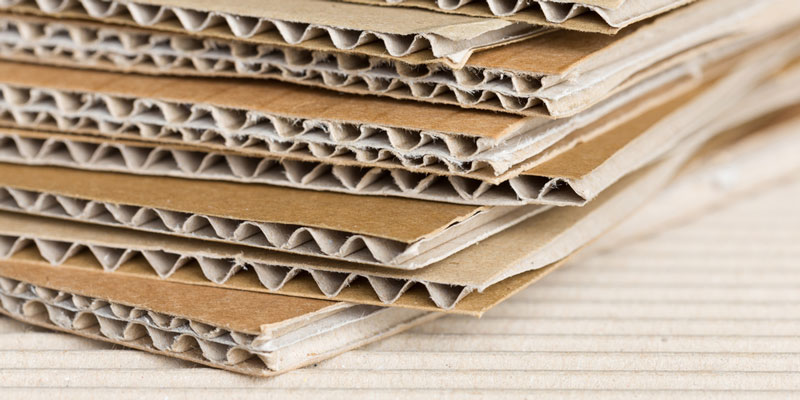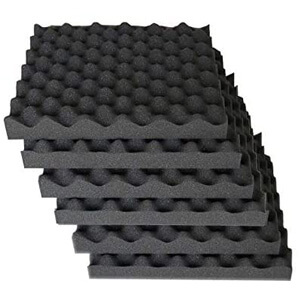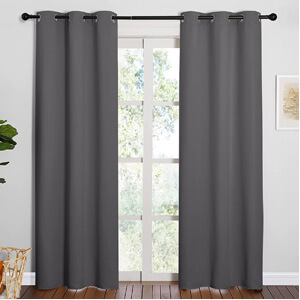Soundproofing your home or office is a necessity to some degree. We often face rude noise interruptions from our colleague’s incessant gossip or your lousy next-door neighbor.

The need to soundproof your space cannot be exaggerated. However, optimizing your home setup without breaking the bank is usually the preferred path. Besides, you might only want to add some resistance to the noise migration from outside and not totally block out the noise.
Therefore, you opt for DIY soundproofing tricks to dampen the noise level. One of many cheap, readily available materials is cardboard.
Is Cardboard Good for Soundproofing? How effective is cardboard for soundproofing? What are other affordable alternatives to cardboard? Read on to get comprehensive answers:
How effective is cardboard?
If you’re working from home or live in an apartment with neighbors with busy mouths, faintly blocking out the noise might be your priority. So, there’s no need for expensive soundproofing materials like soundproofing foam, and more drywalls, among many others.
Consonant with that, cardboard, a recyclable material, seems a decent option. It has a smooth texture and will help reflect sound. However, it’s a light material with minute resistance to the flow of sound. This material can help, but it’s not an ideal solution for people looking to keep the noise out entirely.
Simply put, cardboard isn’t a tremendous soundproof material. However, you can improve its reflective quality if used together with a high-reflective surface. Therefore, you want to attach a tin or aluminum foil to the back of the cardboard to create a more effective soundproofing panel.
Using cardboard alone to absorb sound is misleading information. It might dampen the sound movement by throwing in some resistance to its path; it does not guarantee noticeable soundproof results.
Another factor worth considering is the type of card used. This material is porous with a lot of space, making it a decent option for deafening the noise. However, you want to stick with E-flute cardboard or other corrugated cardboard. For best results, you want to use several pieces of cardboard to increase their mass.
How To Soundproof With Cardboard
For decades, teachers, sound engineers, and mechanics have used cardboard as a quick soundproof trick for better audio management. However, cardboard acoustic panels are not durable and susceptible to wear and tear.
Nonetheless, they still come in handy for blocking out some noise from your loud neighbors or keeping your joyous hullabaloo confined to the walls of your apartment.
Here’s how to do the soundproofing trick with cardboard to make a difference:
- Step 1 – get the necessary materials: glue or tape, box cutting knife, cardboard boxes, wire, or velcro to hold the items securely.
- Step 2 – cut the corrugated cardboard to your preferred size. Stack several pieces together to increase the thickness for better soundproofing performance.
- Step 3 – Place the stacked corrugated on a tin or aluminum foil to effectively stop noise from traveling through the panel.
Note: the acoustic cardboard panel is flammable. Therefore, it’s not safe to mount these panels too close to equipment that radiates extreme heat. If possible, place them opposite this equipment for safety.
Also, there are different types of cardboard – A-fluting, B-fluting, C-fluting, and E-fluting. The latter has the smallest interior grooves, while the A-flute cardboard has the largest grooves among them.
By and large, the E-fluting corrugated cardboard is the most effective option to dampen noise than other types available. Recent studies show that E-fluting cardboard blocks deliver about 40% of drywall’s soundproofing performance. Remember, you need to stack them to get the best out of them.
Pros And Cons Of Cardboard Soundproofing
Pros:
- Cheap & readily available: Unlike other materials for soundproofing, cardboard is readily available. They are cheap and recyclable, making them a decent choice for people who want to limit their footprint.
- Versatile & easy to work with: Cardboard is versatile. They can be used for a wide range of applications, including soundproofing. If you intend to use it to block out the noise, you can easily cut them into shapes, stack them and add aluminum foil to create a DIY acoustic panel. Also, this craft material can be painted or colored to add exciting visuals to your room. Besides, you can create any size or style of acoustic cardboard panel to cater to your needs. For instance, you can make a standing or wall-hung version.
- Average soundproofing performance: While corrugated cardboard is not the perfect substitute for drywall and other soundproofing materials, it can help reduce the noise level for a quiet workspace or home. However, it would be best if you opted for E-flute corrugated cardboard for the best performance.
Cons:
- Highly Flammable: Once you are done with the acoustic cardboard panels, you should hang them away from a device or machine that gives off extreme heat to prevent a fire hazard.
- Wear and tear: Cardboards are not durable, so your DIY acoustic panel is prone to wear and tear. The sad part is that you’ll have to make them time and again to replace the old ones.
Cardboard And Its Alternatives
The cardboard has a reflective surface and won’t be ideal for sound absorption. Therefore, it’s best to consider other materials that absorb noise and other types of sound better.
Consonant with that, the right material for sound absorbing sound should be pliable, porous, and soft to ensure they work effectively as sound insulation. On the flip, dense and hard materials feature impenetrable surfaces, which results in sound reflection instead of absorption.
With this in mind, you can understand what to expect from these recyclable materials. While cardboard can help with audio management, it’s more of a sound reflector than an absorber.
Therefore, if you are looking for other cheap alternatives to cardboard or don’t want to spend the weekend cutting and painting some corrugated cardboard pieces; here are other options to help with sound management:
- Soundproof blanket
- Acoustic sheets
- Acoustic foam panel
- Sound deadener mats
- Acoustic egg crate foam
Keep in mind that the goal of soundproofing your space is to use soundproofing material to help absorb, diffuse, or minimize the impact of sound waves.
Top 2 Alternatives to DIY Cardboard Acoustic Panel
1. IZO All Supply Convoluted Acoustic Foam
The IZO All Supply Convoluted Egg Crate Panels Acoustic Foam is available in different sizes and packaging options. Unlike other products, it comes in 6 or 12 black colors. This way, you don’t have to grab your designer hat to figure out how to mix and match them. The all-black panels are easy to install anywhere and suit your existing decor.

Each sheet covers 1 sq. ft and is perfect for home theaters, recording studios, and vocal booths, among many others. Thanks to their 2-inch thickness, these wall tiles offer strong soundproofing to work well in most cases. Another incredible advantage of the IZO All Supply Convoluted Egg Crate Panels Acoustic Foam is its price point. You can purchase as many as necessary without going beyond your budget.
Despite their affordable price point, these made-in-USA wall tiles deliver incredible soundproofing performance and durability. These absorption tiles reduce flutter echoes and standing sound waves to increase your home studio’s sound clarity. Thus, you can’t go wrong with this point if you are into binge video gaming, video recording, and editing.
Above all, they arrive uncompressed, and each tile breaks into two wedges to prevent the long wait for these products to warp or expand.
Pros:
- All-black design for easy installation
- Versatile design
- Right thickness for impressive sound control
- Perfect for home studio
- Made in the USA
Cons:
- Flammable
2. NICETOWN 3 Pass Microfiber Thermal Blackout Window Curtains
The NICETOWN 3 Pass Microfiber Noise Reducing Thermal Blackout Window Curtains/Drapes are our favorite 一 They help block out sound, light, and heat. No doubt, it’s the best value for money.

This product is made of quality fabrics, thick and heavy enough to put a reliable stopping action to transfer sound, heat, and light. These curtains are available in many colors to match your home/office decor.
What’s more? This product impedes nearly most UV rays traveling through it. Thanks to its triple weave, the NICETOWN Window Curtains/Drapes help maintain your room temperature and reduce migrating noise from outside.
Besides, they are made out of polyesters, known for their incredible sound absorption and blocking properties.
Pros:
- Easy to maintain
- Soft and heavy for better sound absorption performance
- Machine washable design
- Available in different color options
Cons:
- Quality control could be better
Conclusion
All in all, cardboard are versatile and inexpensive material to use for your soundproof project. While they are not meant to absorb the noise, they can help with your room’s audio management.
When used alone, cardboard is not so great for reducing the noise to a significant level. Hence, it’s best to pair them with other soundproofing materials such as aluminum or tin foil for the best results.
More importantly, if you are only interested in making acoustic panels with cardboard to save money, there are other cheap and more effective soundproofing products like the NICETOWN Window Curtains/Drapes and the IZO All Supply Convoluted Egg Crate Panels Acoustic Foam.
